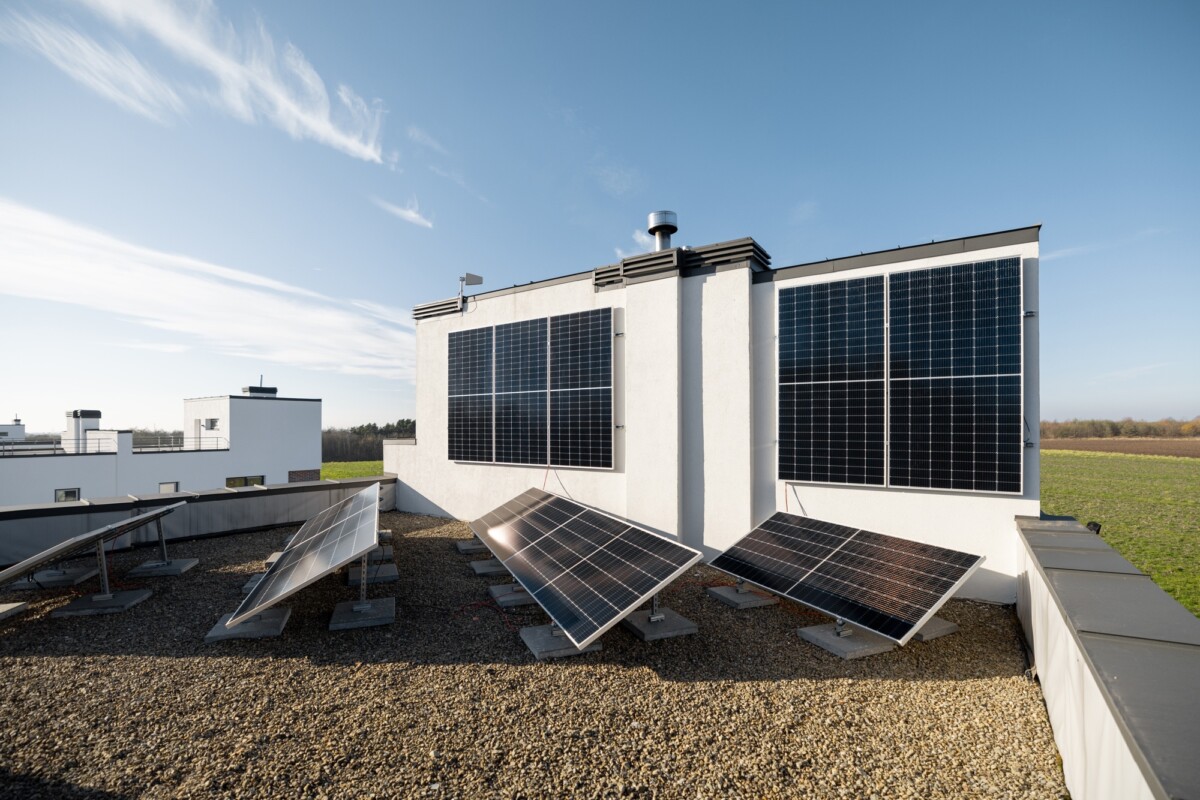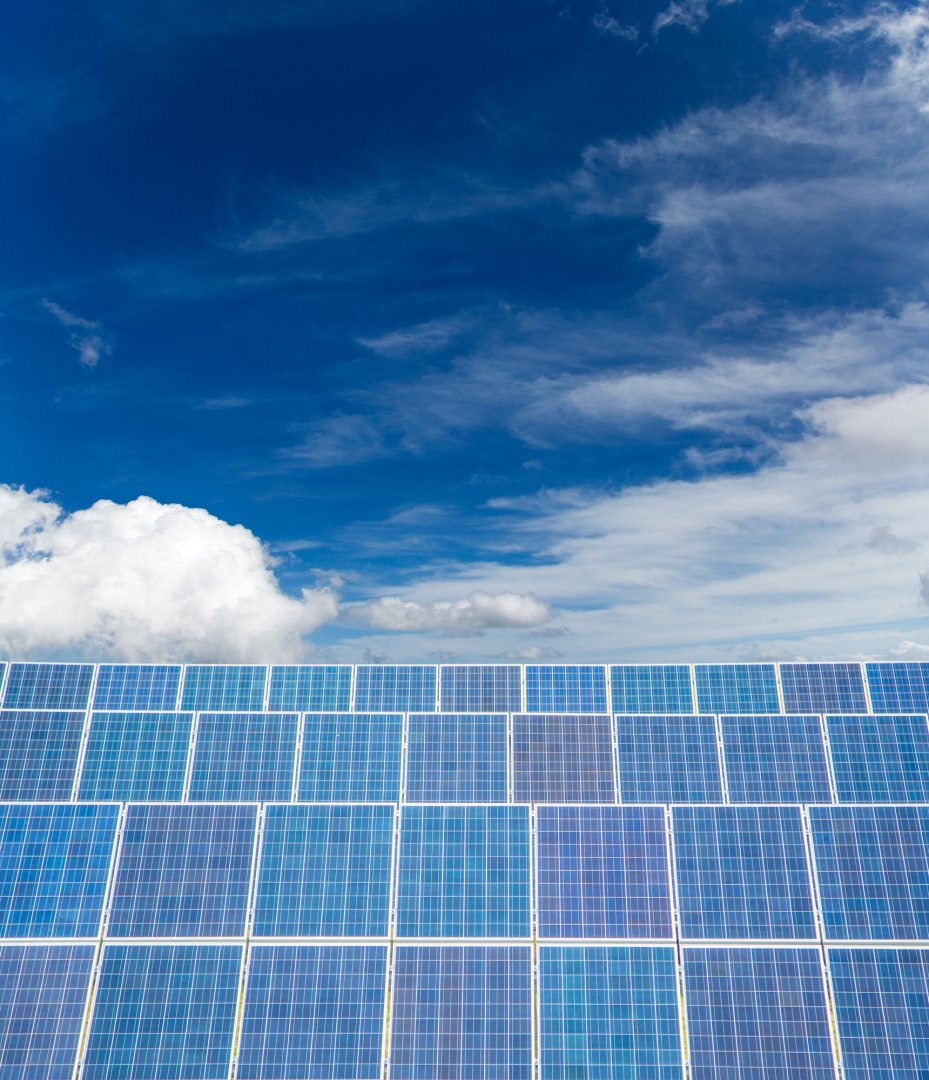Solar panels are a crucial part of the renewable energy revolution. They convert sunlight into electrical energy and are used to power homes, businesses, and communities. With the rise of environmental concerns and the increasing cost of traditional energy sources, more and more people are turning to solar energy as a sustainable and cost-effective alternative. However, before switching to solar energy, it’s important to understand the different types of solar panels available. Different types of panels have different pros and cons. Choosing the proper type of panel can significantly impact the efficiency and productivity of a solar power installation. Unlock the Secrets of Solar Panels: What Are the Types of Solar Panels? Get this article’s scoop on monocrystalline, polycrystalline, and thin-film panels!
This article will explore the various types of solar panels and provide a comprehensive overview.
What Are the Types of Solar Panels? Exploring Your Options
1. Monocrystalline Solar Panels
Solar panels that use monocrystalline silicon have a single, unbroken crystal. With efficiency between 15% and 22%, these are the most effective solar panels currently available. They are also the most recognizable, with their distinctive black color and uniform appearance.
Advantages of Monocrystalline Solar Panels:
- High efficiency: Monocrystalline panels have the highest efficiency ratings of all the different types of solar panels, meaning that they generate more electricity per square foot of surface area.
- Long lifespan: Monocrystalline panels have a long lifespan, typically lasting 25-30 years, which makes them a good choice for homeowners and businesses who want to maximize the return on their investment.
- Good performance in low-light conditions: Monocrystalline panels are known for their good performance in low-light conditions, making them a good choice for areas with less sunlight.
- Space-saving design: Monocrystalline panels are often cut into a circular shape, which maximizes the amount of electricity that can be generated from a given amount of roof space.
Disadvantages of Monocrystalline Solar Panels:
- Higher cost: Monocrystalline panels are typically the most expensive type of solar panel due to their high efficiency and long lifespan.
- Susceptibility to shading: Monocrystalline panels are more sensitive to shading than other types of solar panels, meaning that they may produce less electricity if trees or other obstacles partially shade them.
- High-temperature sensitivity: Monocrystalline panels are more sensitive to high temperatures than other solar panels, meaning they may produce less electricity on hot days.
Overall, monocrystalline solar panels are a good choice for homeowners and businesses who want to maximize the amount of electricity they generate from a limited amount of roof space. In general, they are the most expensive kind of solar panel. Therefore they may not be the greatest option for people trying to save money.
Discover the power of solar energy! Click here to learn why it’s so important and how you can make a difference for the planet.
2. Polycrystalline Solar Panels
Polycrystalline solar panels are made from multiple silicon crystals, which are melted together to form a larger crystal structure. They are less efficient than monocrystalline panels, with efficiencies ranging from 13% to 16%, but they are also less expensive to manufacture.
Advantages of Polycrystalline Solar Panels:
- Lower cost: Polycrystalline panels are less expensive to manufacture than monocrystalline panels, making them a more affordable option for homeowners and businesses.
- Good performance in hot climates: Polycrystalline panels are preferable in hot regions because they are less affected by heat.
- No shading issues: Polycrystalline panels are less sensitive to shading than monocrystalline panels, meaning that they may produce more electricity if trees or other obstacles partially shade them.
Disadvantages of Polycrystalline Solar Panels:
- Lower efficiency: Polycrystalline panels have lower efficiency ratings than monocrystalline panels, meaning that they generate less electricity per square foot of surface area.
- Shorter lifespan: Polycrystalline panels have a shorter lifespan than monocrystalline panels, typically lasting 20-25 years, which may not be ideal for homeowners and businesses who want to maximize the return on their investment.
- Less uniform appearance: Polycrystalline panels have a less uniform appearance than monocrystalline panels due to the multiple crystal structures that make up the panel.
Overall, polycrystalline solar panels are a good choice for homeowners and businesses looking to keep costs low and live in hot climates. However, due to their lower efficiency and shorter lifespan in comparison to monocrystalline panels, polycrystalline panels may not be the ideal option for individuals looking to optimize the quantity of electricity generated from a given amount of roof area.

3.Thin-Film Solar Panels
Thin-film solar panels are made from a thin layer of photovoltaic material that is deposited onto a substrate, typically glass, plastic, or metal. Unlike crystalline solar panels, which are made from a solid material, thin-film panels are flexible and can be bent, making them ideal for unconventional installation locations such as curved surfaces or building facades. There are several different types of thin-film solar panels, including amorphous silicon, copper indium gallium selenide (CIGS), and cadmium telluride (CdTe) panels.
Advantages of Thin-Film Solar Panels:
- Flexibility: Thin-film panels are flexible and can be bent, making them ideal for unconventional installation locations such as curved surfaces or building facades.
- Lightweight: Thin-film panels are much lighter than crystalline panels, making them easier to handle and install.
- Low cost: Thin-film panels are less expensive to manufacture than crystalline panels, making them a popular choice for large-scale solar energy projects.
- High-temperature tolerance: Thin-film panels are more tolerant to high temperatures than crystalline panels, making them a good choice for hot climates.
Disadvantages of Thin-Film Solar Panels:
- Lower efficiency: Thin-film panels have lower efficiency ratings than crystalline panels, meaning that they generate less electricity per square foot of surface area.
- Shorter lifespan: Thin-film panels have a shorter lifespan than crystalline panels, meaning that they may need to be replaced more frequently.
- Higher rate of degradation: Thin-film panels have a higher rate of degradation over time, meaning that they may produce less electricity than crystalline panels.
Overall, thin-film solar panels are a good choice for large-scale solar energy projects and unconventional installation locations. They are less efficient and last less than crystalline panels. Therefore, they may not be the ideal solution for individuals and companies trying to maximize electricity generation from a small roof space.
Unlock the secrets of solar panels and discover how they work with this comprehensive guide.
Bottom Line
In conclusion, solar panels come in three main types: monocrystalline, polycrystalline, and thin film. Every option has pros and cons; the ideal choice ultimately comes down to the individual homeowner’s or business’s requirements and budget. Polycrystalline panels provide a reasonable alternative to balance out the higher initial investment required for monocrystalline panels. Thin-film panels are the least efficient but most flexible and lightweight. With technological advances, the cost of solar panels has come down, making it more accessible for people to switch to renewable energy sources. Using solar panels of any type to generate electricity is a huge leap toward a greener tomorrow.
“Don’t let the cost of solar power hold you back. Reach out to FreeSolarPowerQuotes.com today and discover the perfect solar panel solution for your home or business!”
FAQS
What is the difference between monocrystalline and polycrystalline solar panels?
Having efficiencies between 15% and 22%, monocrystalline solar panels are the most efficient panel type. Polycrystalline solar panels are made from multiple silicon crystals and have lower efficiency ratings, typically ranging from 13% to 16%.
What is the lifespan of monocrystalline and polycrystalline solar panels?
The lifespan of monocrystalline solar panels is 25-30 years, while that of polycrystalline panels is just 20-25 years.
What are thin-film solar panels?
Thin-film solar panels are made from a thin layer of photovoltaic material, typically either silicon or a mixture of other materials, that is applied to a substrate, such as glass or plastic. They are the least efficient panel type, with efficiencies ranging from 6% to 13%.
How do I know which type of solar panel is right for me?
The sort of solar panel that is best for you will depend on many criteria, including your financial plan, the local climate, the amount of roof space available, and the degree of shading in your location. You should also consider the efficiency and lifespan of each type of panel and make an informed decision that will maximize the benefits of solar energy for you and your family.
What is the cost difference between monocrystalline and polycrystalline solar panels?
Monocrystalline solar panels are generally more expensive than polycrystalline solar panels due to the higher efficiency and longer lifespan of monocrystalline panels.
Do thin-film solar panels have a shorter lifespan than monocrystalline and polycrystalline panels?
Thin-film solar panels have a shorter lifespan than both monocrystalline and polycrystalline panels, typically lasting 15-20 years.
Can thin-film solar panels be used on unique or difficult-to-fit roof spaces?
Yes, thin-film solar panels are the most flexible and lightweight type of panel, making them a good choice for unique or difficult-to-fit roof spaces.











